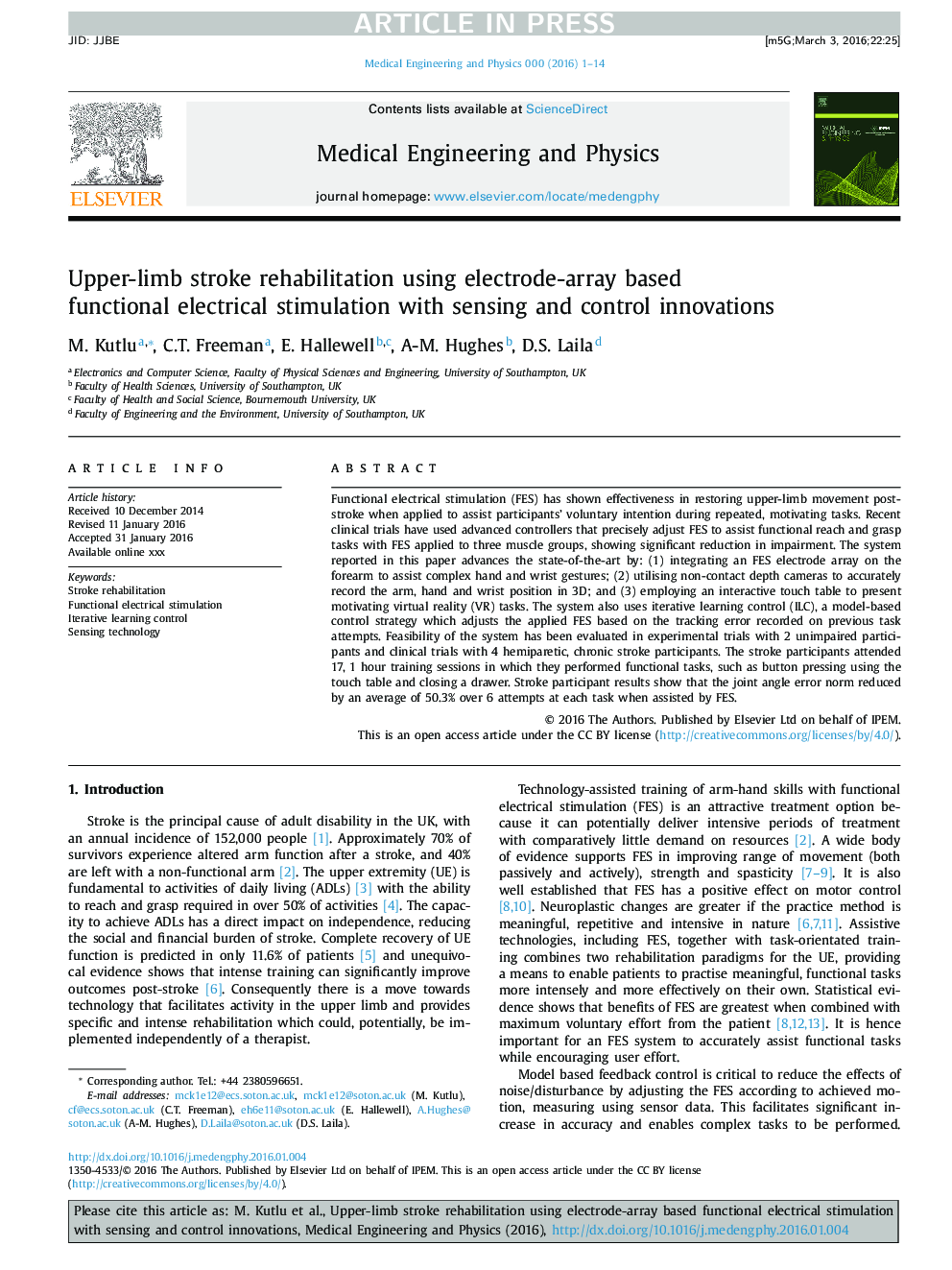| Article ID | Journal | Published Year | Pages | File Type |
|---|---|---|---|---|
| 10434947 | Medical Engineering & Physics | 2016 | 14 Pages |
Abstract
Functional electrical stimulation (FES) has shown effectiveness in restoring upper-limb movement post-stroke when applied to assist participants' voluntary intention during repeated, motivating tasks. Recent clinical trials have used advanced controllers that precisely adjust FES to assist functional reach and grasp tasks with FES applied to three muscle groups, showing significant reduction in impairment. The system reported in this paper advances the state-of-the-art by: (1) integrating an FES electrode array on the forearm to assist complex hand and wrist gestures; (2) utilising non-contact depth cameras to accurately record the arm, hand and wrist position in 3D; and (3) employing an interactive touch table to present motivating virtual reality (VR) tasks. The system also uses iterative learning control (ILC), a model-based control strategy which adjusts the applied FES based on the tracking error recorded on previous task attempts. Feasibility of the system has been evaluated in experimental trials with 2 unimpaired participants and clinical trials with 4 hemiparetic, chronic stroke participants. The stroke participants attended 17, 1Â hour training sessions in which they performed functional tasks, such as button pressing using the touch table and closing a drawer. Stroke participant results show that the joint angle error norm reduced by an average of 50.3% over 6 attempts at each task when assisted by FES.
Related Topics
Physical Sciences and Engineering
Engineering
Biomedical Engineering
Authors
M. Kutlu, C.T. Freeman, E. Hallewell, A-M. Hughes, D.S. Laila,
